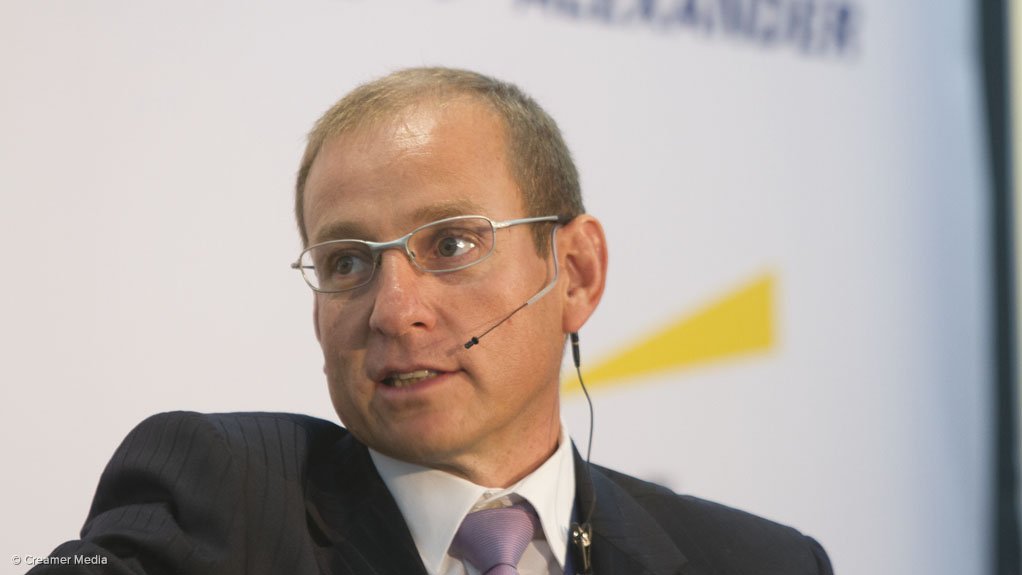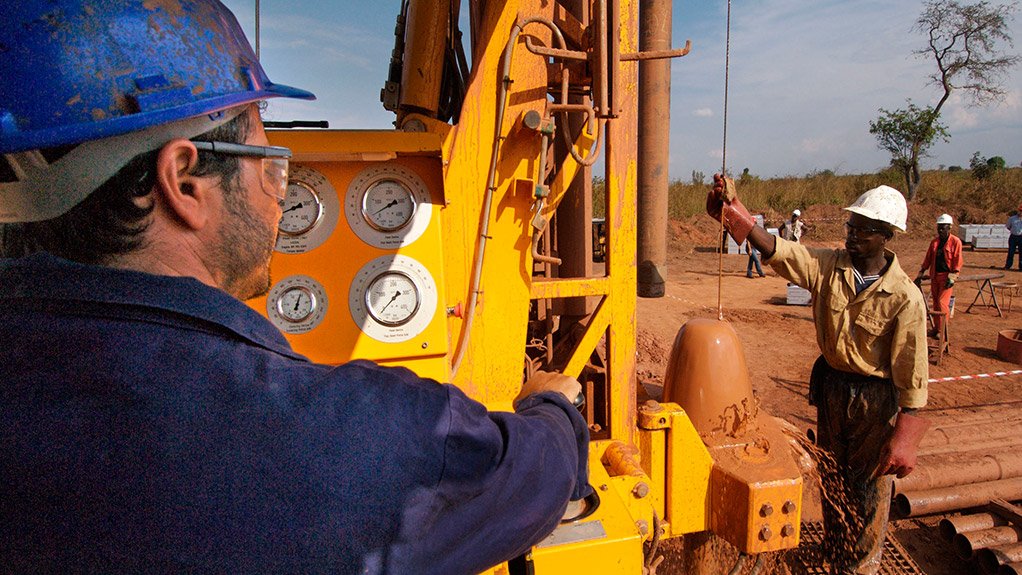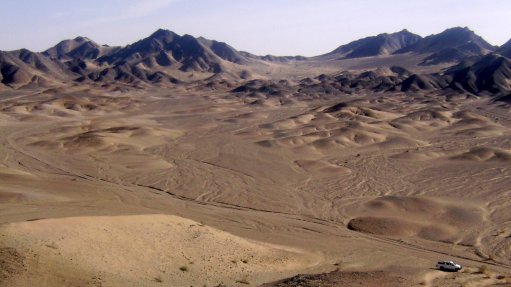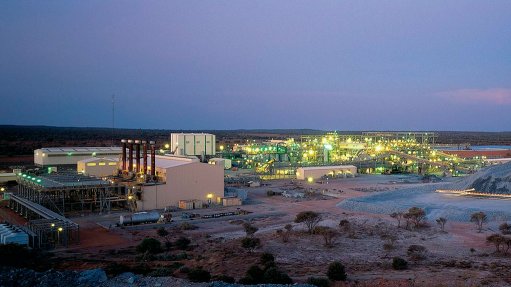Time for mining industry to take action



MICHAL KOTZE The mining industry has moved out of danger and some mining companies see the conditions as ripe for value accretive moves, with market differentiation their immediate goal
CAUTIOUS MARKET Exploration spending has been significantly reduced since 2012, with funds cautiously targeted at less risky, later-stage assets, typically located in politically stable countries
In the wake of commodity prices beginning to show signs of recovery in 2016, mining companies globally have taken steps to strengthen their balance sheets, building a platform from which to take decisive action for the future, says multinational professional services provider PwC Africa energy, utilities and mining industry leader Michal Kotzé.
The 2017 Joburg Indaba, held at the Inanda Club, in Sandton, Johannesburg, from October 4 to 5, will provide an ideal opportunity for South African industry players to consider their next move, with PwC highlighting its potential to assist in this endeavour as the lead sponsor of the event.
According to PwC’s ‘Mine 2017’ report, the world’s top 40 miners recovered from a race to the bottom, with the drive to tail off impairments and avoid any new bankruptcies, together with the absence of any significant streaming transactions reinstating a positive gap between market caps and net book values that were absent in 2015. The company notes that a return to profitability in 2016 has given many miners the much-needed space to start planning their next move.
“The narrative of the top 40 in 2016 tends to read like a mine site safety mantra: Stop. Think. Act. “The industry has moved out of danger, but 2016 was not a year of significant action and we now wait to see who will be bold and step out beyond the fluctuating market confidence. While many will be willing to ride the waves of industry sentiment, others will see the conditions as ripe for value-accretive moves, with market differentiation their immediate goal,” says Kotzé.
Action might also come in the form of commitments to greenfield projects, mergers and acquisitions (M&A) or technology development – or a combination of these – while others may realign their strategy in response to external forces, such as recycling and substitution development, shareholder activism and government intervention.
The new technologies promising to boost the sector include software to improve the efficiency of asset use, devices to remotely monitor and control activities, and robotics to automate repetitive tasks.
The benefits of asset optimisation tools are significant, with PwC estimating that maintenance costs can be reduced by between 20% and 40% and asset use increased by up to 20%, capital expenses decreased by 5% to 10%, while also delivering better environmental, health and safety outcomes. Several top 40 miners have announced or implemented digital innovations that are already enhancing performance.
PwC assurance partner Andries Rossouw stresses that mining companies need to combine engineering excellence and know-how with a new open-mindedness to learn from advanced analytics and embrace robotics and platforms that fundamentally challenge decades of unchanged procedures, highlighting that the future of mining is as much dependent on behaviour as it is on technology.
“The key question is: Who will act rather than simply react? There will be more advances this year, but the extent of their impact remains to be seen,” he says.
Industry Insights
The fourteenth edition of PwC’s industry series report, which was released by PwC Africa in June, analyses the financial performance and global trends affecting the mining industry and outlines the new opportunities and hazards on the horizon, as well as the impact of intransigent or innovative activity.
The report analysed 40 of the largest listed mining companies by market capitalisation. The financial information for 2016 covers the reporting periods April 1, 2015, to December 31, 2016, with each company’s results included for the 12-month financial reporting period that falls in this timeframe. The number of emerging companies included in the top 40 has decreased by two and now totals 17. There were seven new entrants from the previous year, five of which had made appearances on previous rankings in either 2014 or 2015. Mining and metals companies First Quantum and Teck Resources re-emerged on the 2016 list after strengthening their financial positions.
The report recognises a return to profitability in 2016, with an aggregate top-40 net profit of $20-billion, after an aggregate loss of $28-billion in 2015. The improved fortunes of the industry have subsequently been directed to strengthening balance sheets.
Overall, the market capitalisation of the top 40 increased in 2016 by 45% to $714-billion, approaching the 2014 level. This was mainly the result of rising commodity prices, says PwC.
Revenue from the top 40 remained relatively flat – up just 1% from the previous year’s $491-billion – despite a rebound in commodity prices, particularly for coal and iron-ore, in the second half of the year.
Capital expenditure (capex) fell dramatically again, by a further 41%, to a new record low of just $50-billion, while impairment charges tumbled last year to a less alarming $19-billion, after hitting a near record in 2015. Meanwhile, debt repayments were $93-billion, up from $73-billion a year earlier, with most of the debt issued to refinance, rather than fund, acquisitions or mine development.
“We see an improved gearing ratio of 41%, down from the 2015 record of 49%, but this is still well above the ten-year average of 29%. Interestingly, we also found that around half the capex figure was invested in sustaining activities, so the growth capital portion was strikingly small, compared with previous years,” adds Kotzé.
Rapidly rising commodity prices sparked renewed market optimism and improved credit ratings across the top 40 firms. Valuations also climbed, especially for the traditional miners, with the trend continuing through the first quarter of 2017, even as commodity prices remained flat. “But, valuations aside, there is little to suggest that the group made any substantial advances throughout the year.”
For the fourth consecutive year, the industry reduced spending on exploration, with $7.2-billion invested in 2016 – barely one-third of the record $21.5-billion allocated in 2012, and the funds cautiously targeted less risky, later-stage assets, typically located in politically stable countries. M&A activity was also limited, with several large deals, expected to be completed by early 2017, withdrawn from the market, possibly owing to the rebound in commodity prices and the improving prospects of the companies that owned them.
PwC highlights that China remains the exception to the dominant investment behaviour within the top 40. During the downturn, Chinese companies demonstrated one significant advantage over other miners from both traditional and emerging countries – access to capital. This enabled them to fund more acquisitions than their counterparts and China is expected to continue to be active in acquiring global mining assets in the foreseeable future as a way of reducing its longer-term dependence on imports.
Comments
Press Office
Announcements
What's On
Subscribe to improve your user experience...
Option 1 (equivalent of R125 a month):
Receive a weekly copy of Creamer Media's Engineering News & Mining Weekly magazine
(print copy for those in South Africa and e-magazine for those outside of South Africa)
Receive daily email newsletters
Access to full search results
Access archive of magazine back copies
Access to Projects in Progress
Access to ONE Research Report of your choice in PDF format
Option 2 (equivalent of R375 a month):
All benefits from Option 1
PLUS
Access to Creamer Media's Research Channel Africa for ALL Research Reports, in PDF format, on various industrial and mining sectors
including Electricity; Water; Energy Transition; Hydrogen; Roads, Rail and Ports; Coal; Gold; Platinum; Battery Metals; etc.
Already a subscriber?
Forgotten your password?
Receive weekly copy of Creamer Media's Engineering News & Mining Weekly magazine (print copy for those in South Africa and e-magazine for those outside of South Africa)
➕
Recieve daily email newsletters
➕
Access to full search results
➕
Access archive of magazine back copies
➕
Access to Projects in Progress
➕
Access to ONE Research Report of your choice in PDF format
RESEARCH CHANNEL AFRICA
R4500 (equivalent of R375 a month)
SUBSCRIBEAll benefits from Option 1
➕
Access to Creamer Media's Research Channel Africa for ALL Research Reports on various industrial and mining sectors, in PDF format, including on:
Electricity
➕
Water
➕
Energy Transition
➕
Hydrogen
➕
Roads, Rail and Ports
➕
Coal
➕
Gold
➕
Platinum
➕
Battery Metals
➕
etc.
Receive all benefits from Option 1 or Option 2 delivered to numerous people at your company
➕
Multiple User names and Passwords for simultaneous log-ins
➕
Intranet integration access to all in your organisation




















